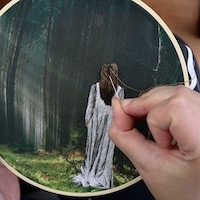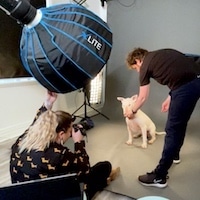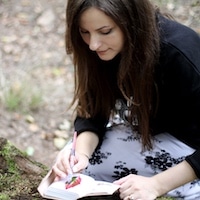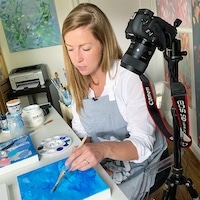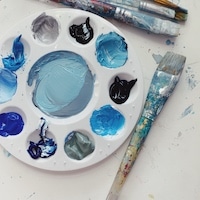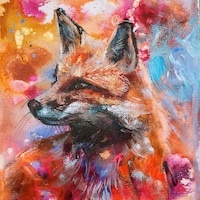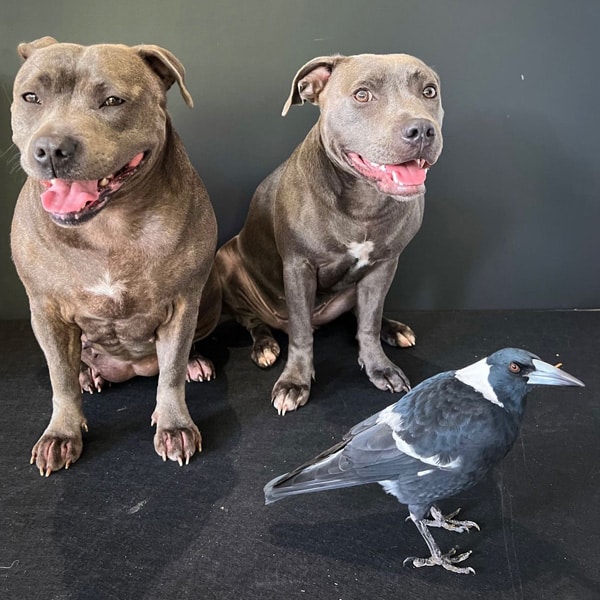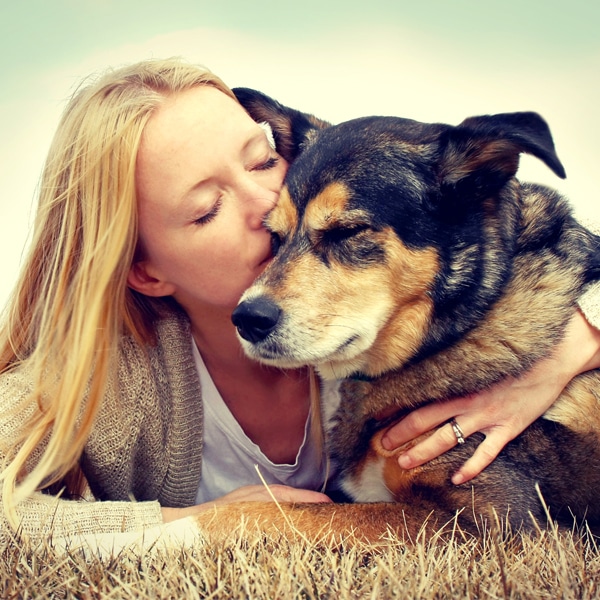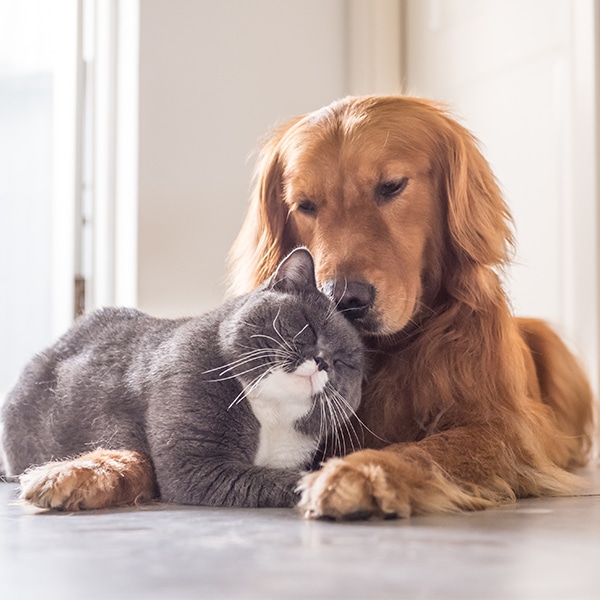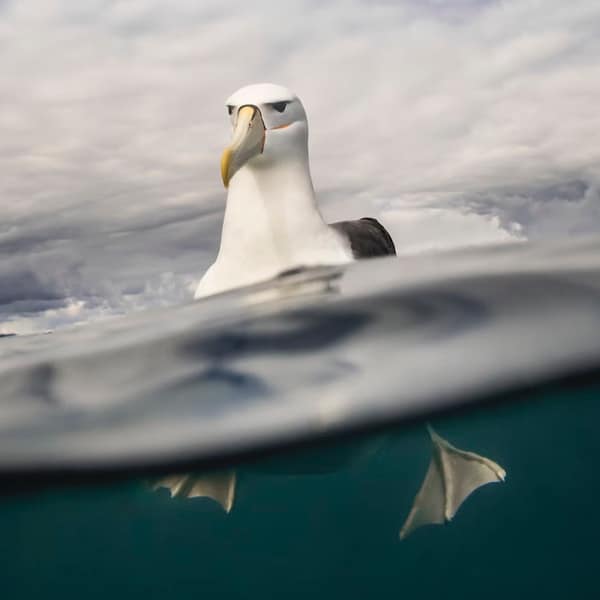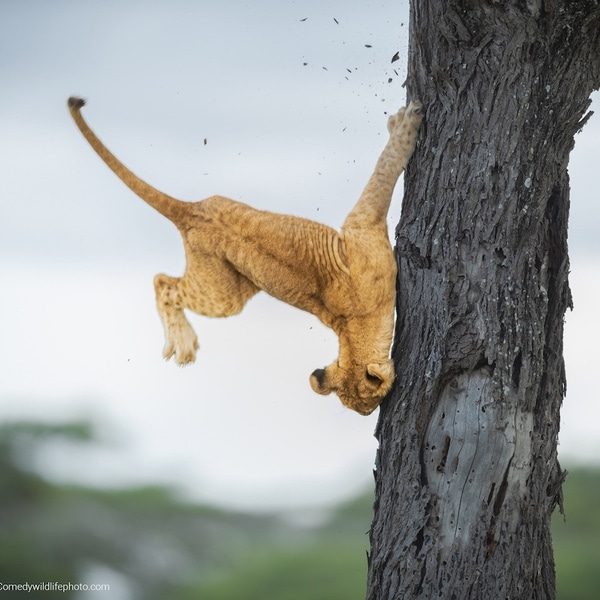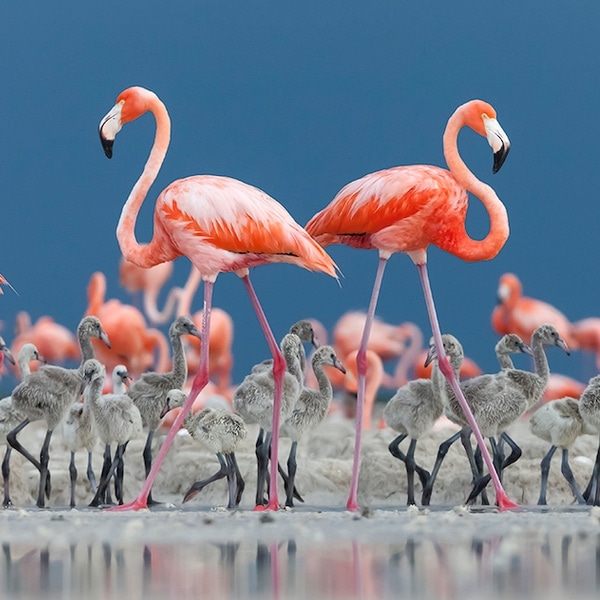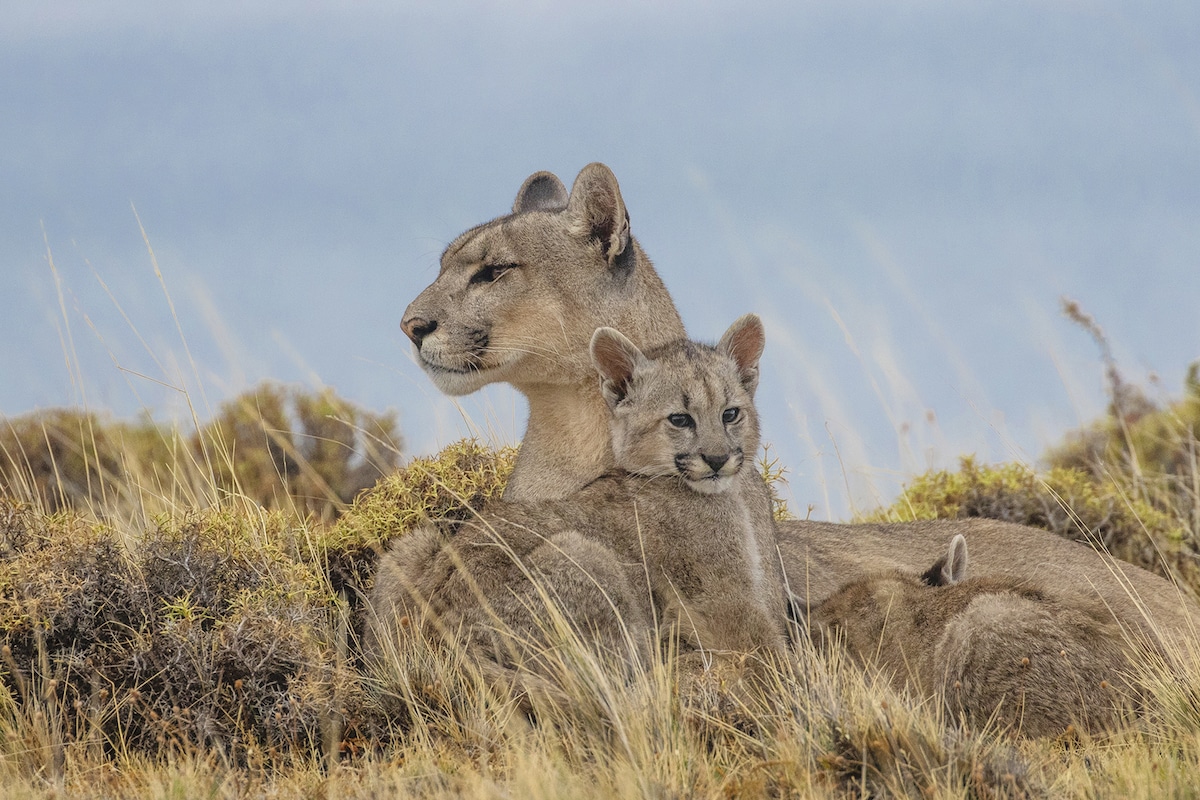
A female puma, surrounded by her cubs, ever on the lookout for prey in the Chilean Patagonia. Contributed by Angela Ambrosini (Photo: Angela Ambrosini/Panthera)
The world’s leading wild cat conservation organization, Panthera, is celebrating progress in saving these animals and their habitats by releasing its first annual Picture Purrfect list. This list highlights the 22 best camera trap and professional images from 2022 that showcase wild cats, their threats, the beautiful ecosystems they call home, the challenges of life and conservation in the field, and the courageous scientists and rangers working to protect them.
Founded in 2006, Panthera operates in 39 countries to reduce or eliminate the most pressing threats to cheetahs, jaguars, leopards, lions, pumas, snow leopards, tigers, and the 33 small cat species. The images on the Picture Purrfect list reflect their incredible projects in different countries.
From a female puma surrounded by her cubs in the Chilean Patagonia to the collaring of a jaguar in the Brazilian Pantanal, the photographs paint a rich picture of wild cats today. The photos don't shy away from the struggles these animals face, but they also remind us of the majestic creatures that need our help.
Both ends of the spectrum are a reminder of the world that Panthera hopes we can live in. This world is one where “wild cats thrive in healthy, natural, and developed landscapes that sustain people and biodiversity.”
The world’s leading wild cat conservation organization, Panthera, has put together a list of their favorite wild cat photos.
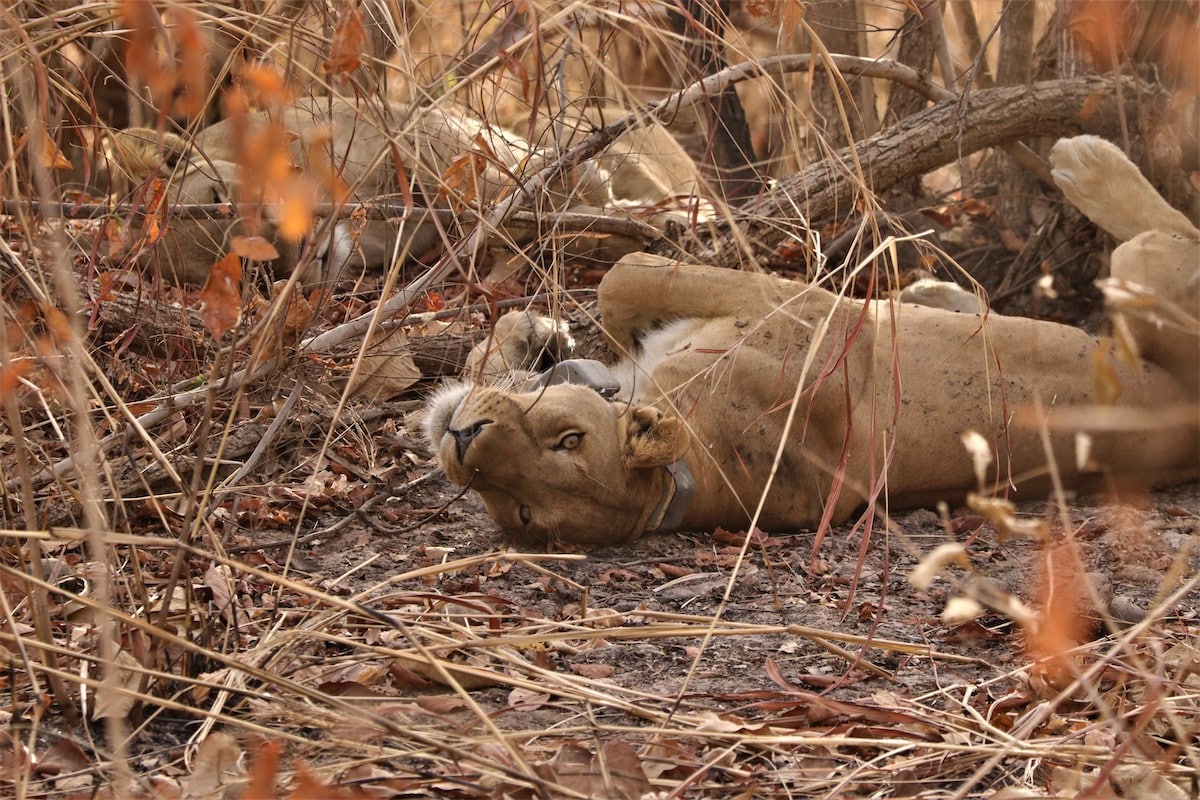
A collared lioness rolls on her back in Senegal's Niokolo Koba National Park. This lioness and five others are the first lions collared in the Park in an ambitious effort to recover the Critically Endangered species. This lioness was given the nickname ‘Flo,' and with her collared sister in the background, these lionesses now form the largest of the Park's prides. Among other conservation activities, a team from Panthera and Senegal's Department of National Parks track collared lions using VHF in order to collect data on their pride structure and investigate GPS clusters in order to collect data on lion kills and their prey selection. Contributed by Kristoffer Everatt (Photo: Panthera/Senegal/Everatt)
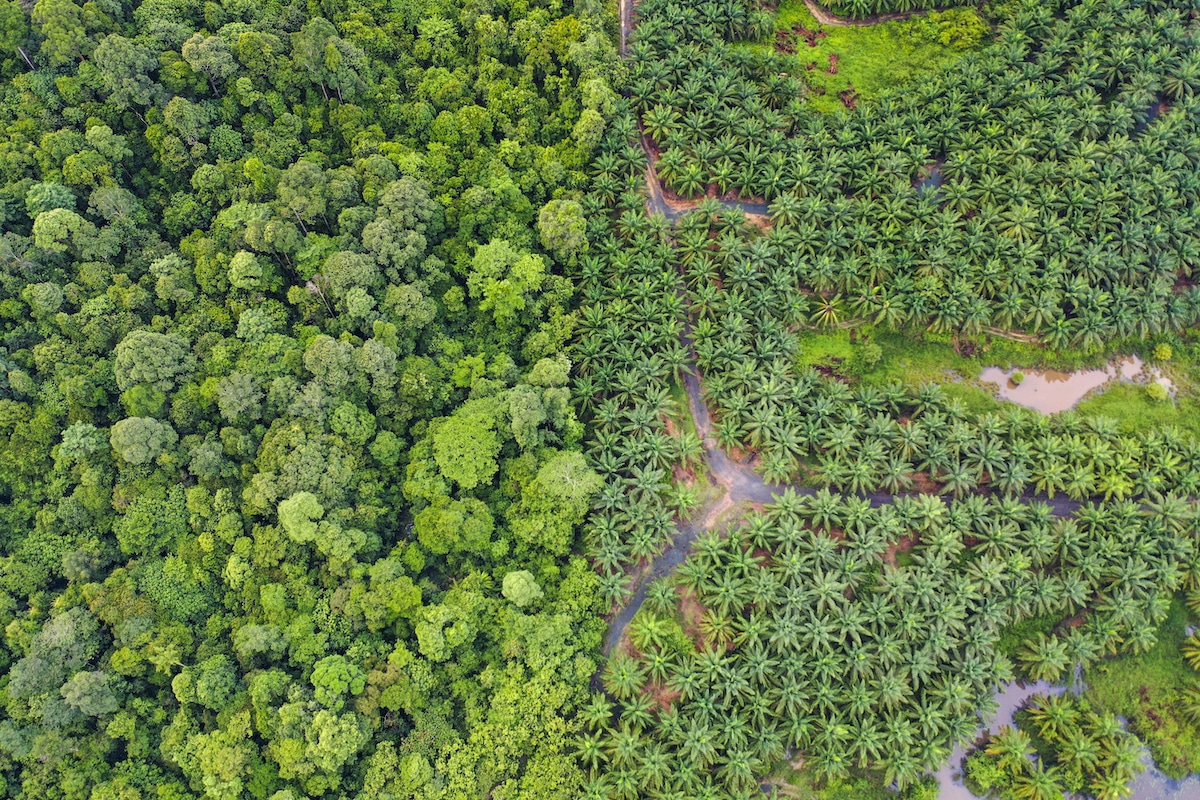
African Oil Palm (Elaeis guineensis) plantation bordering primary tropical rainforest in Tangkulap Forest Reserve, Sabah, Borneo, Malaysia. Malaysian Borneo, where Panthera carries out monitoring and conservation efforts, is home to five wild cat species – the Sunda clouded leopard, bay cat, fishing cat, the marbled cat, and the flat-headed cat. Contributed by Danielle Garbouchian (Photo: Sebastian Kennerknecht/Panthera)
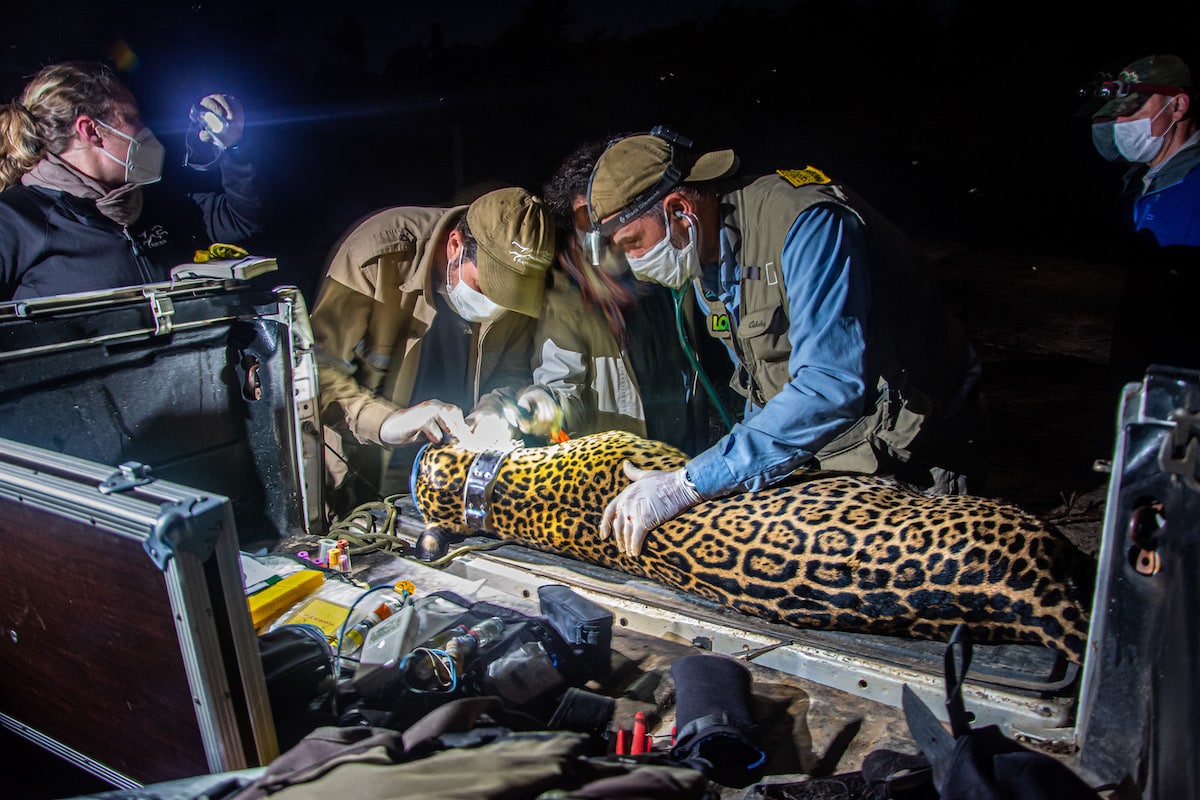
A two-year-old female jaguar nicknamed “Sophia” being collared in the Brazilian Pantanal in June, 2022, weighing in at 55.3k. “Sophia” represents the first female to be collared as part of the Panthera Jaguar Program's long-term demographic study of jaguars throughout their range. To understand ecosystem requirements for females and their offspring, scientists must study their habitat use and movements, along with conducting long-term analysis of their survival and causes of their mortality. The team is tracking female cub production, survival and — eventually — dispersal of young adults as they leave their mother and set out to establish their own territories. Once this is in motion, we will better understand why female jaguars select certain places for den sites (to safeguard their young, vulnerable cubs) and kill sites as they secure food for their growing, weaning cubs.
“Sophia” was born to a resident female jaguar, locally named as “Pixána”, and she is the littermate of another two-year-old female jaguar known as “Fênix”. “Pixána” has been known to local tourists since 2018. Both cubs were identified in 2020, around the same time as fires burned nearly a third of the Pantanal. Contributed by Danielle Garbouchian (Photo: Wai-Ming Wong/Panthera)
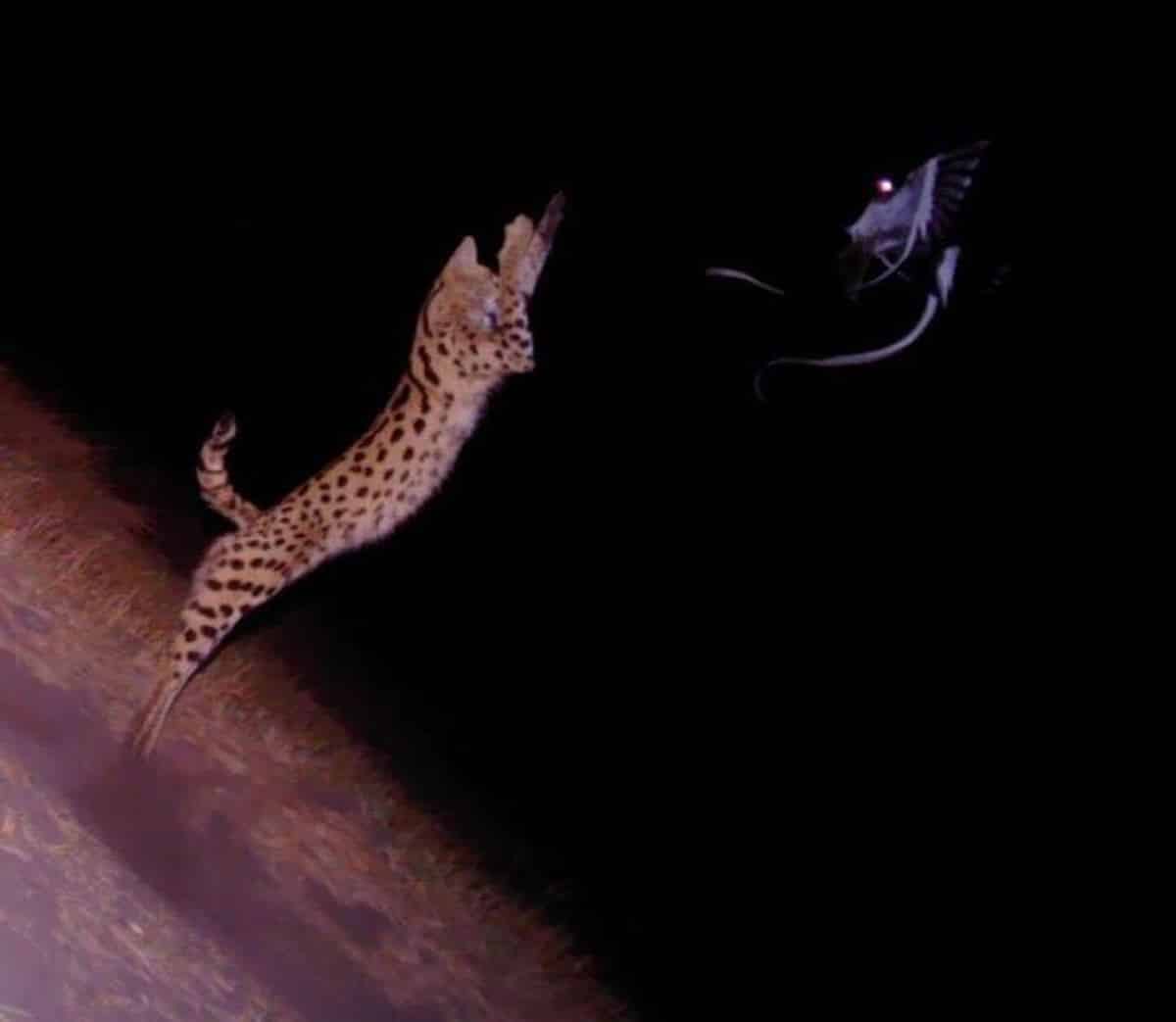
A camera trap photo of a serval attempting to catch prey in Kafue, Zambia, where Panthera's work focuses on protecting wild cat source populations, minimizing mortalities at the human-wildlife interface and restoring and protecting connectivity between wild cat populations. We currently support 17 anti-poaching teams, two dedicated lion monitoring and protected teams and one leopard monitoring team across Kafue National Park and surrounding Game Management Areas. These teams operate within four intensive protection zones and from four dedicated anti-poaching protection and support bases. We use SMART and Earth Ranger technology for adaptive management and conducting wildlife monitoring across the whole system to ensure our adaptive management activities are impactful and evidence-based. Our “Halo Approach” delivers focal protection for key individuals and groups to boost survival and recruitment during times of challenge. This includes two lion monitoring and protection teams. Contributed by Danielle Garbouchian (Photo: Panthera)
The first annual Picture Purrfect list highlights camera trap and professional images that show wild cats, their threats, and and ecosystems.
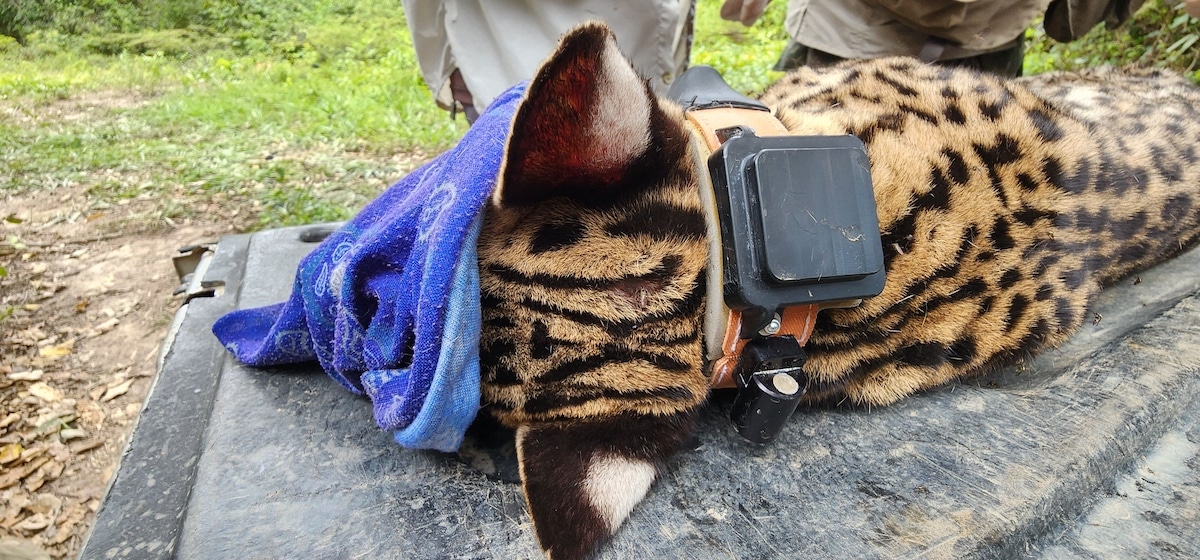
An ocelot is collared in the Brazilian Pantanal to understand more about the species' threats, prey base, movements, behavior and more. Contributed by Raissa Sepulvida (Photo: Steven Bobzien)
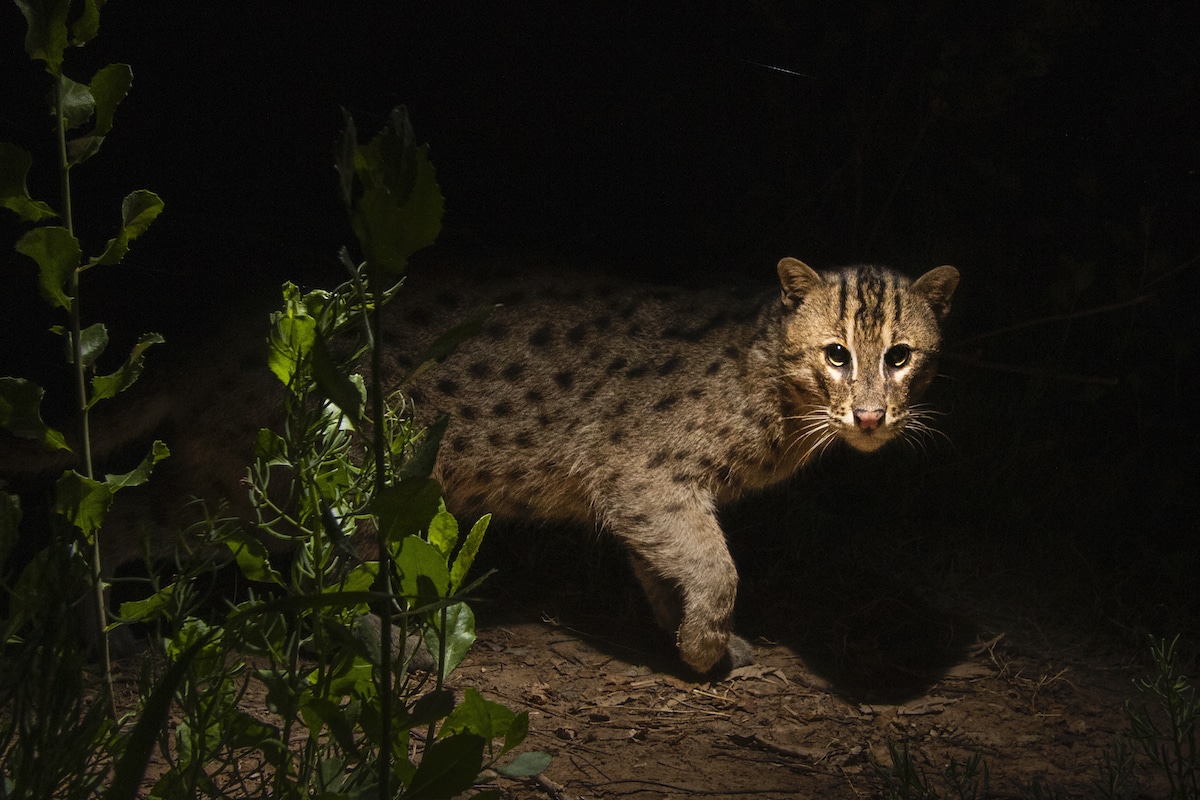
A camera trap snaps a photo of a Fishing Cat (Prionailurus viverrinus) hunting at night near Khao Sam Roi Yot National Park, Thailand.
Recently, a team from Panthera and partners set camera traps and collared three fishing cats to understand more about the species' home range size, use of habitat fragmented by shrimp farms and fish ponds, threats and prey. May, 2022. Contributed by Danielle Garbouchian (Photo: Sebastian Kennerknecht/Panthera)
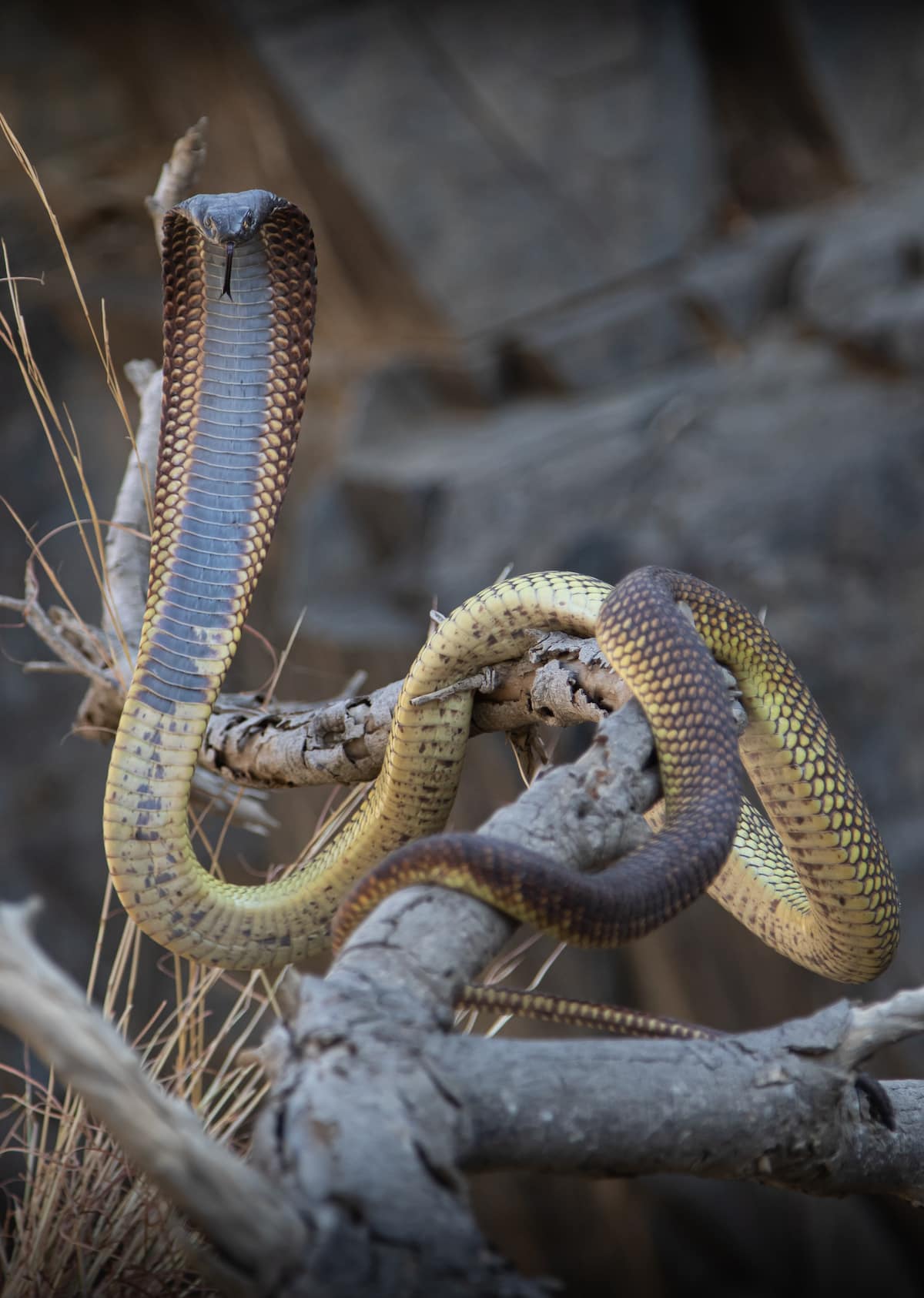
Cobras, like the one pictured here, represent one of many challenges facing conservationists working in partnership with the Kingdom of Saudi Arabia's Royal Commission for AlUla to restore Arabian leopards to the region. Contributed by Danielle Garbouchian (Photo: Panthera)
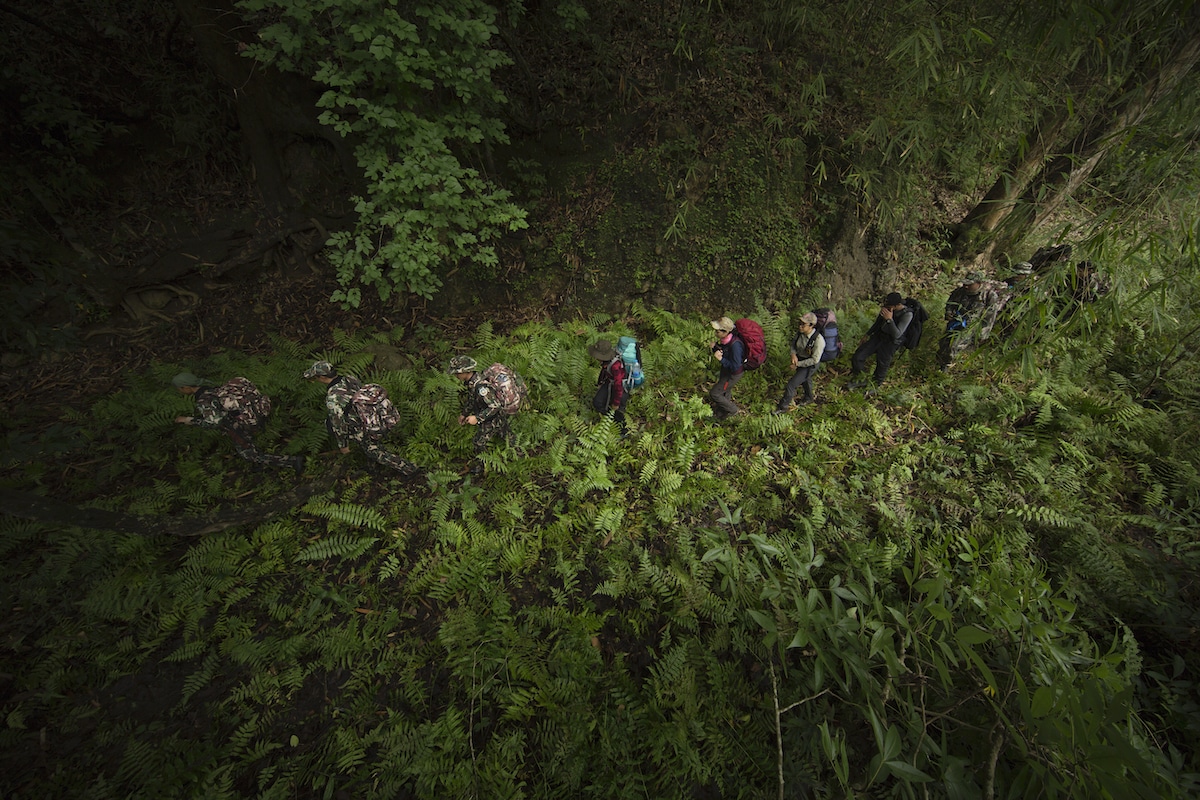
Wildlife rangers from Thailand's Department of National Parks, Wildlife and Plant Conservation and Panthera trek through dense undergrowth in Thailand. Contributed by Danielle Garbouchian (Photo: DNP/Panthera)
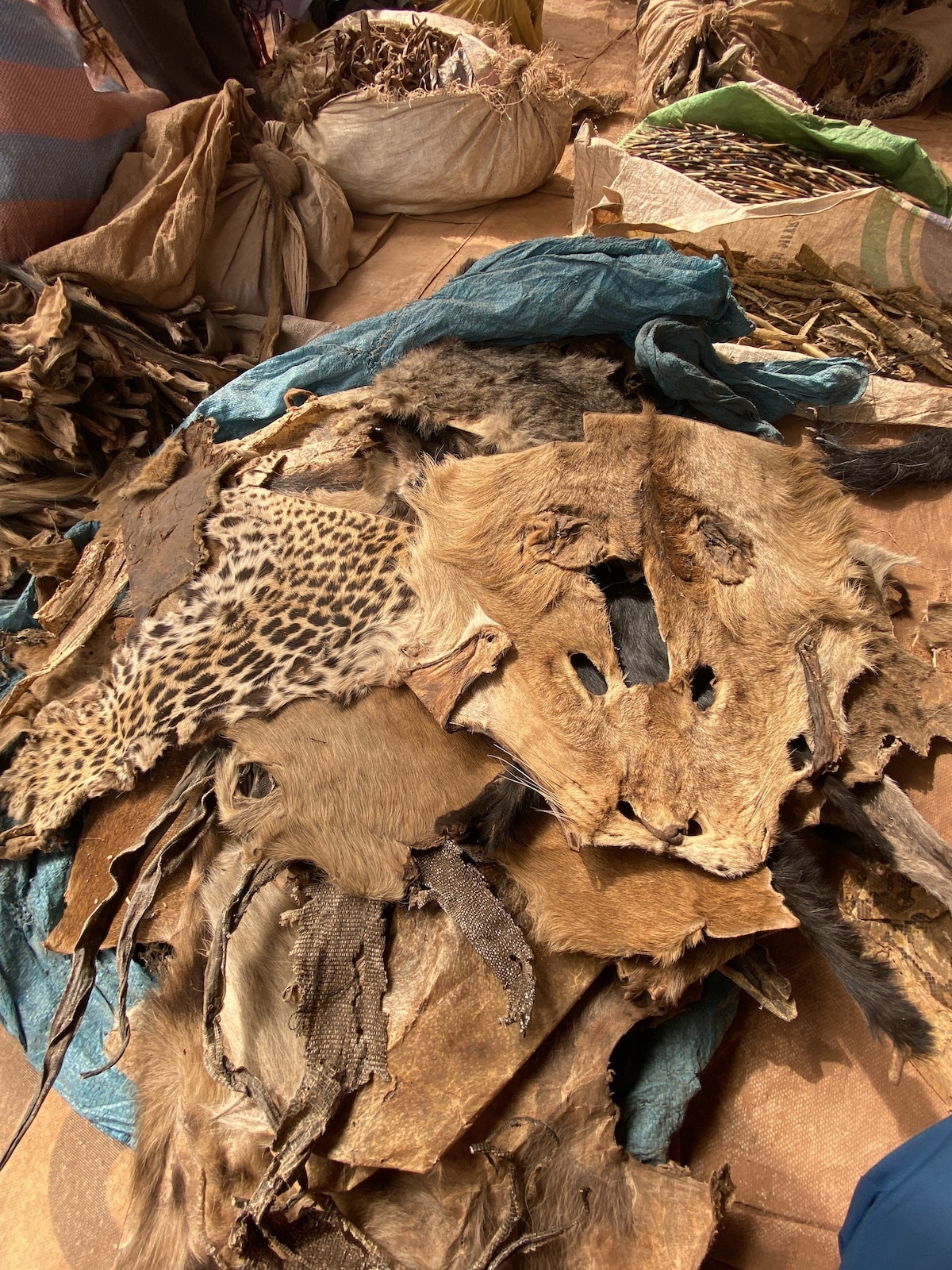
A survey of a market in Tamale, northern Ghana reveals a plethora of wildlife skins and other products, including those of lions and leopards. Poaching for the illegal wildlife trade is a grave threat facing the survival of wild cats, and particularly the largest of their kind – tigers, lions, jaguars, snow leopards, leopards, pumas and cheetahs. Contributed by Marine Drouilly (Photo: Marine Drouilly/Panthera)
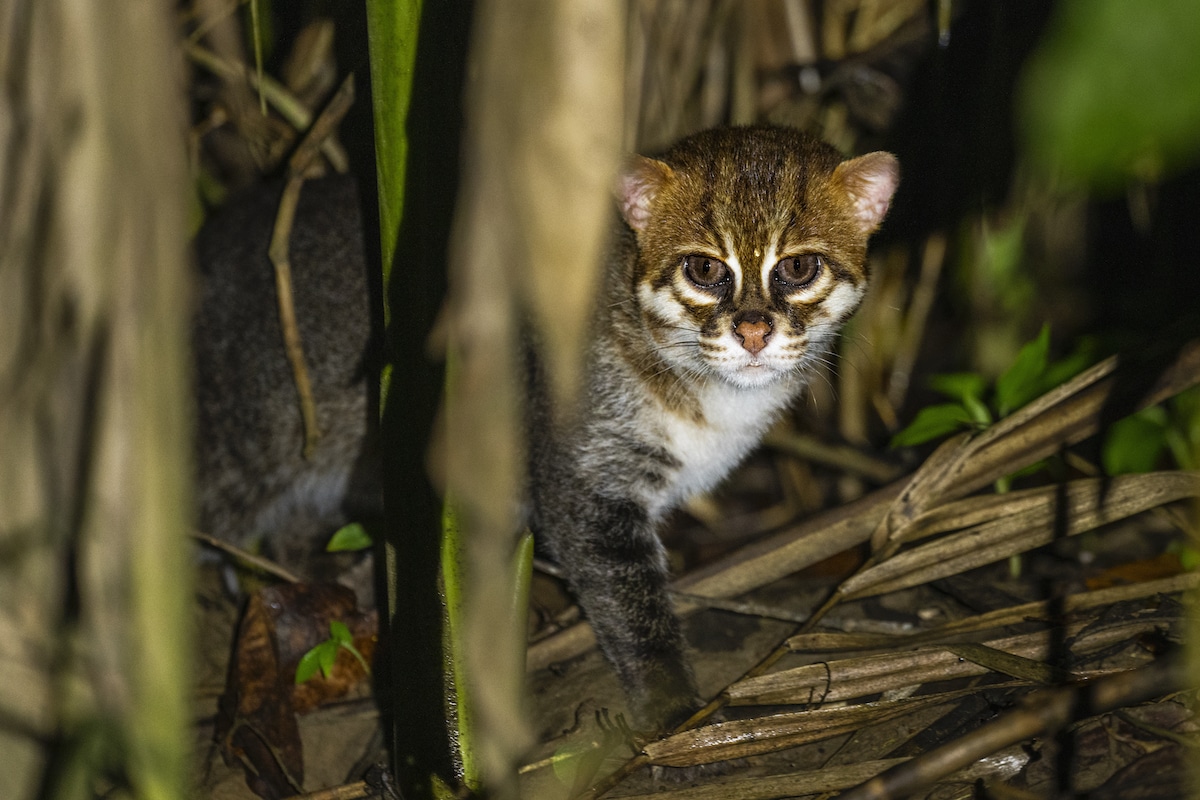
A rare image of a Flat-headed Cat (Prionailurus planiceps) at night, Kinabatangan River, Sabah, Borneo, Malaysia.
This is one of the world’s rarest and most endangered cats, which earned its name from its flattened forehead. It has rarely been observed in the wild. They are at risk from habitat loss and illegal trade and are considered Southeast Asia’s most threatened small felid. Although classified as Endangered on the IUCN Red List, some scientists believe that there may be more flat-headed cats out there than we’ve caught on camera.
In partnership with local NGOs, Panthera is currently conducting flat headed cat surveys in two areas in Sabah, Malaysian Borneo to understand their population numbers and how they are responding to threats such as logging, poaching, and agricultural development. Contributed by Danielle Garbouchian (Photo: Sebastian Kennerknecht/Panthera)
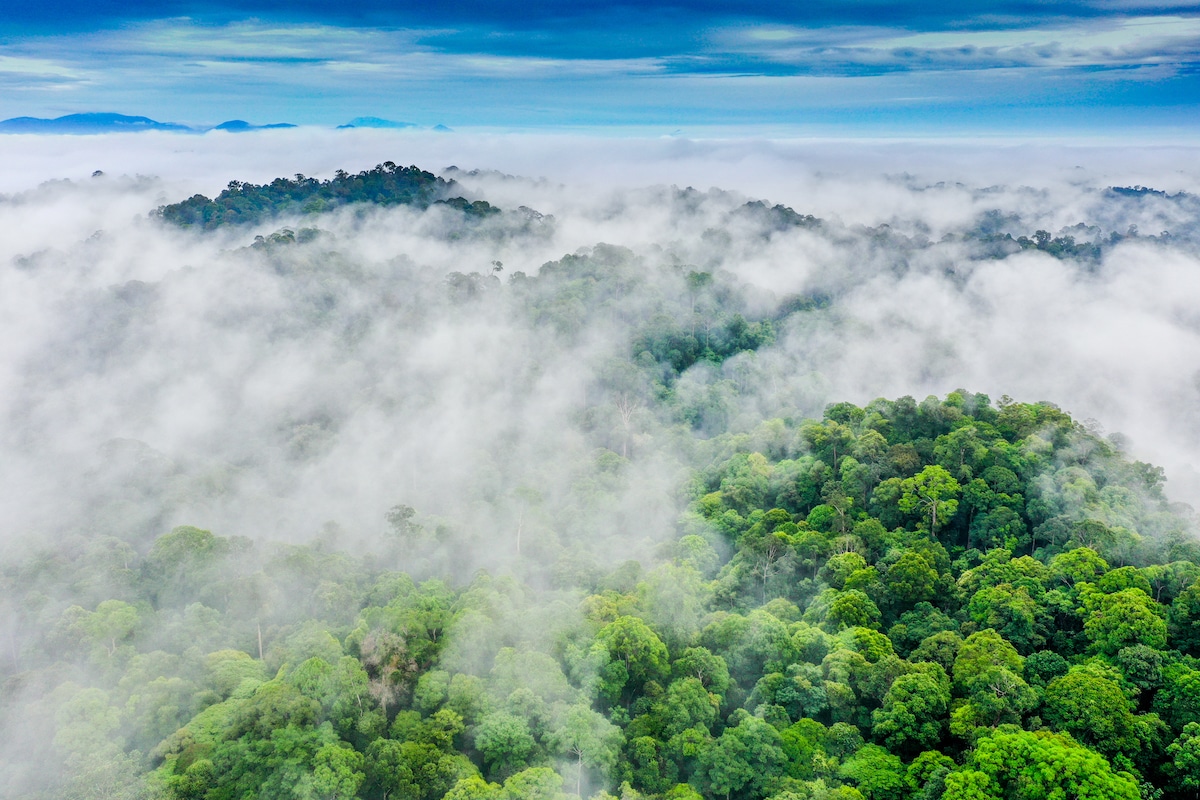
The stunning cloud forest of Borneo, Malaysia, where Panthera and partners are currently conducting flat-headed cat surveys in two regions of Sabah to understand their population numbers and how they are responding to threats such as logging, poaching, and agricultural development.
The flat-headed cat is one of the world’s rarest and most endangered, and earned its name from its flattened forehead. It has rarely been observed in the wild. The species is at risk from habitat loss and illegal trade and is considered Southeast Asia’s most threatened small feline. Although classified as Endangered on the IUCN Red List, some scientists believe that there may be more flat-headed cats out there than we’ve caught on camera. Contributed by Danielle Garbouchian (Photo: Sebastian Kennerknecht/Panthera)
Founded in 2006, Panthera operates in 39 countries and works to protect cheetahs, jaguars, leopards, lions, pumas, snow leopards, tigers, and the 33 small cat species.
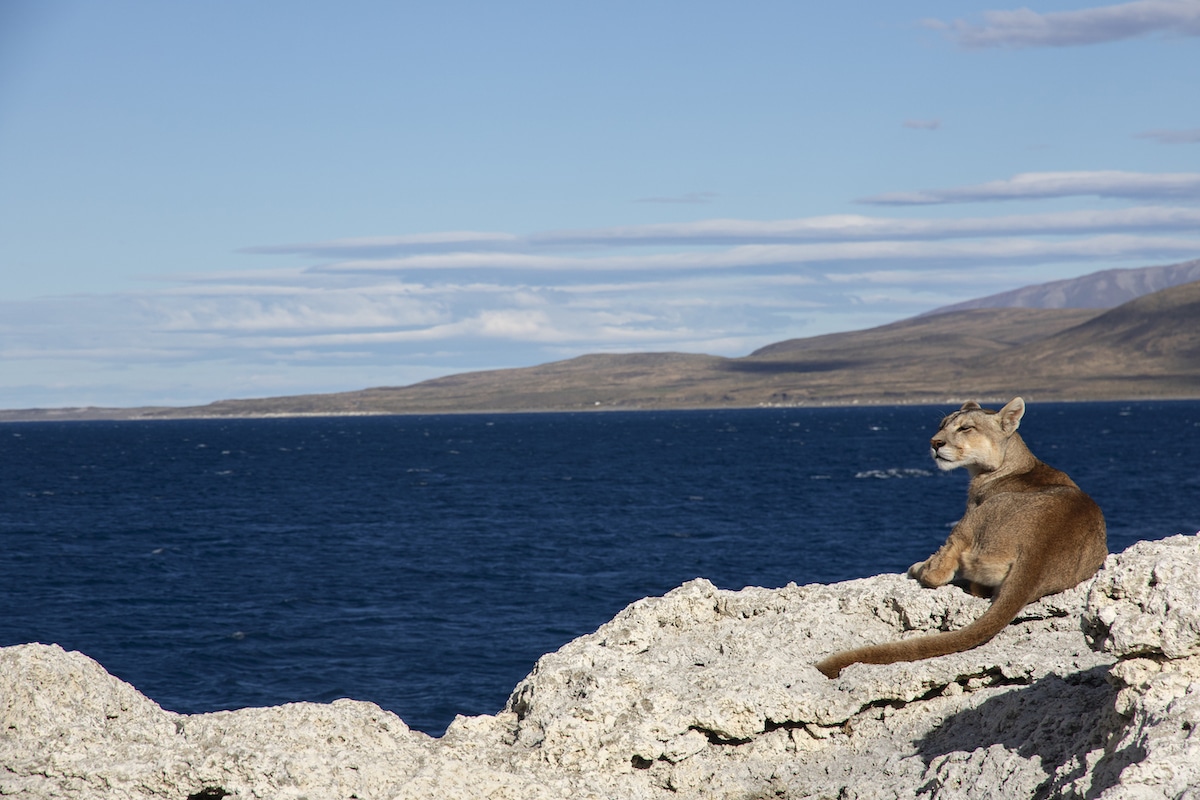
A puma rests on a rock where mountains meet the sea in the Chilean Patagonia. 2022. Contributed by Nicolas Lagos (Photo: Nicolas Lagos /Panthera Nicolas Lagos)
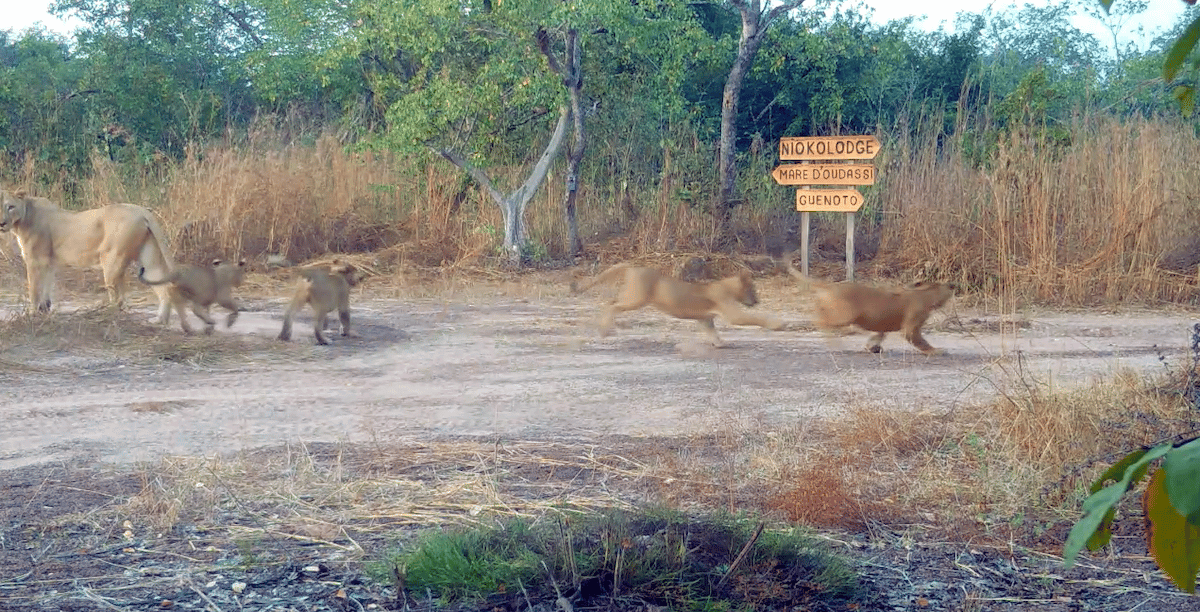
The first record in Senegal of a female lion with four cubs, documented in Niokolo Koba National Park (NKNP), where the species is classified as Critically Endangered. Records like this would have been thought impossible a decade ago, but thanks to persistent anti-poaching and scientific monitoring from Senegal's Department of National Parks and Panthera, NKNP has more than doubled its lion population in a decade. Senegal's DPN and Panthera recently obtained an estimate of 29 lions currently occurring in the park, up from a population of only 12-16 lions surviving in the park in 2011. All known adult females have been successfully breeding in 2021 and 2022, with proof provided in this beautiful record taken in November 2022. Contributed by Danielle Garbouchian (Photo: Panthera/Senegal DPN)

A collection of elephant tusks, wire snares, gin traps and other poaching paraphernalia confiscated by Panthera-trained and led Community Game Guards in Luengue-Luiana National Park, Angola. Contributed by Willem Nieman (Photo: Wian Nieman/Panthera)
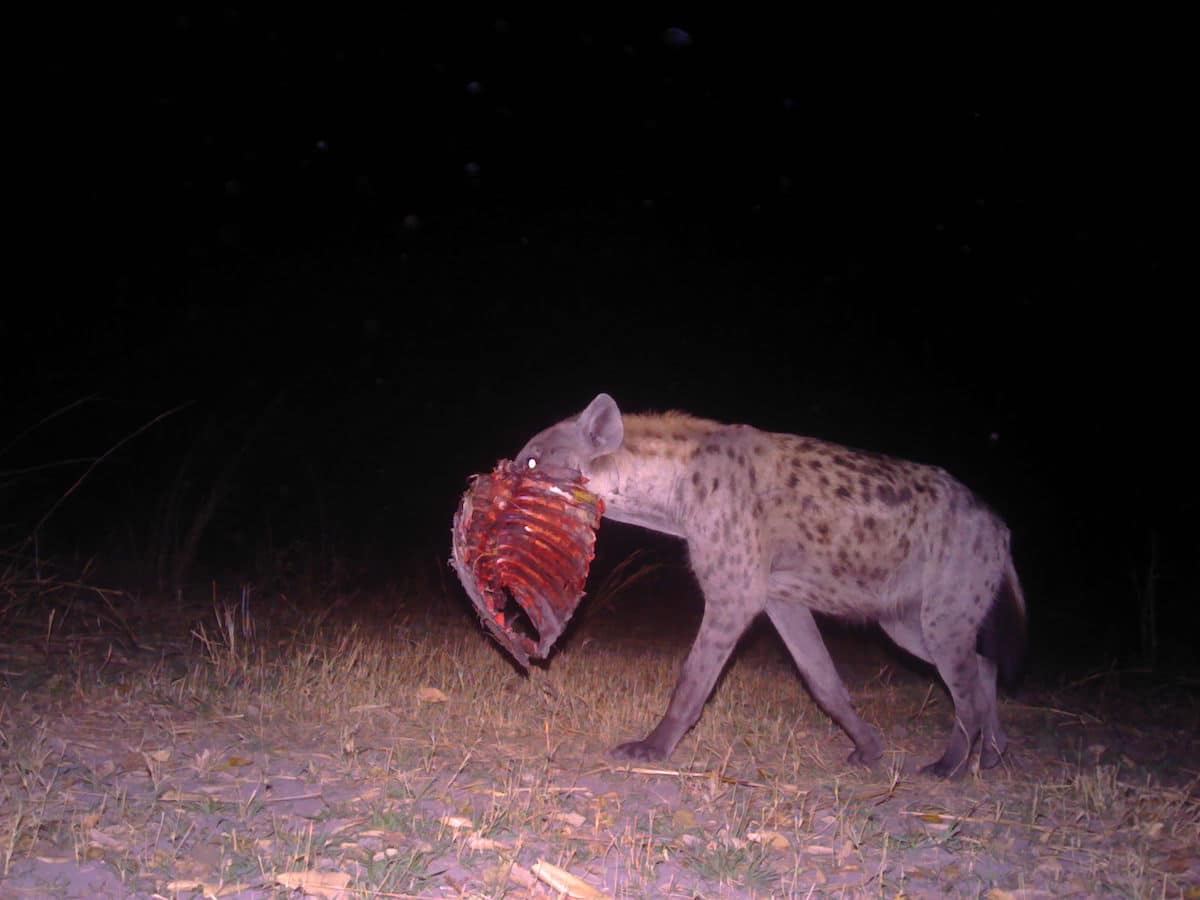
A hyena carries remains of a kill in Luengue-Luiana National Park, Angola 2022. Panthera is carrying out comprehensive conservation, law enforcement, lion and other wildlife monitoring, education and community outreach efforts in the region following a devastating civil war. Contributed by Willem Nieman (Photo: Wian Nieman/Panthera)
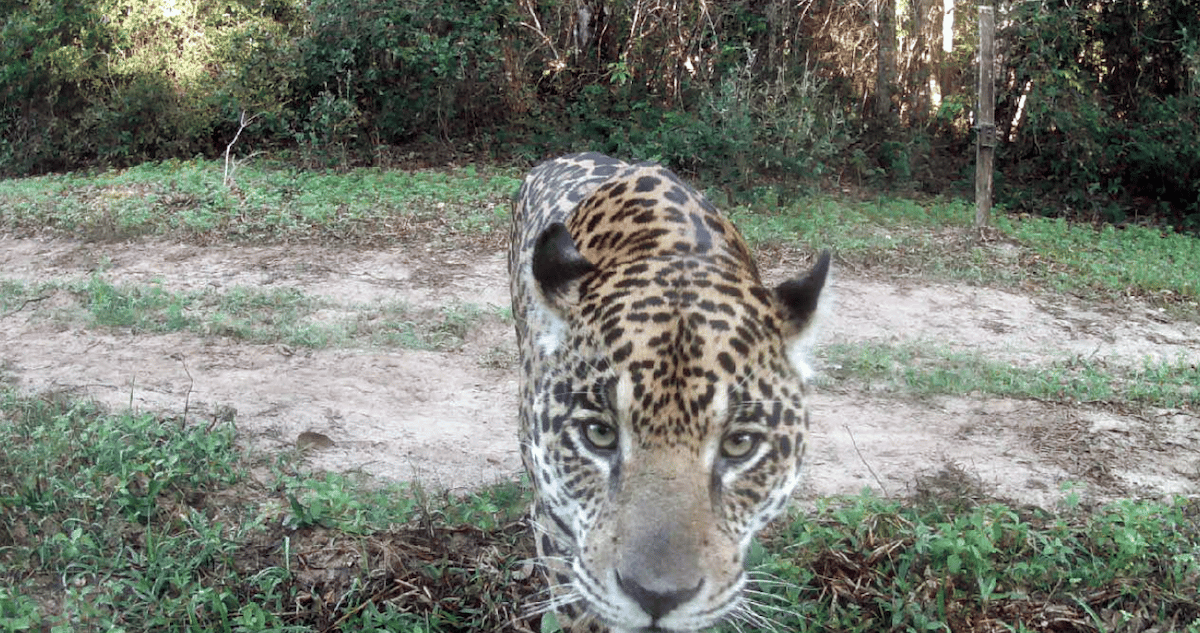
A jaguar moments before it roughly inspected Panthera's camera trap in the Brazilian Pantanal. In this landscape, jaguars serve as a huge ecotourism draw where visitors are guaranteed to see the species along the riverbanks. Panthera works in this region to monitor jaguars, including collaring the study's first female jaguar this year, and mitigate conflict between ranchers and jaguars hungry to feed on cattle. Contributed by Danielle Garbouchian (Photo: Panthera)
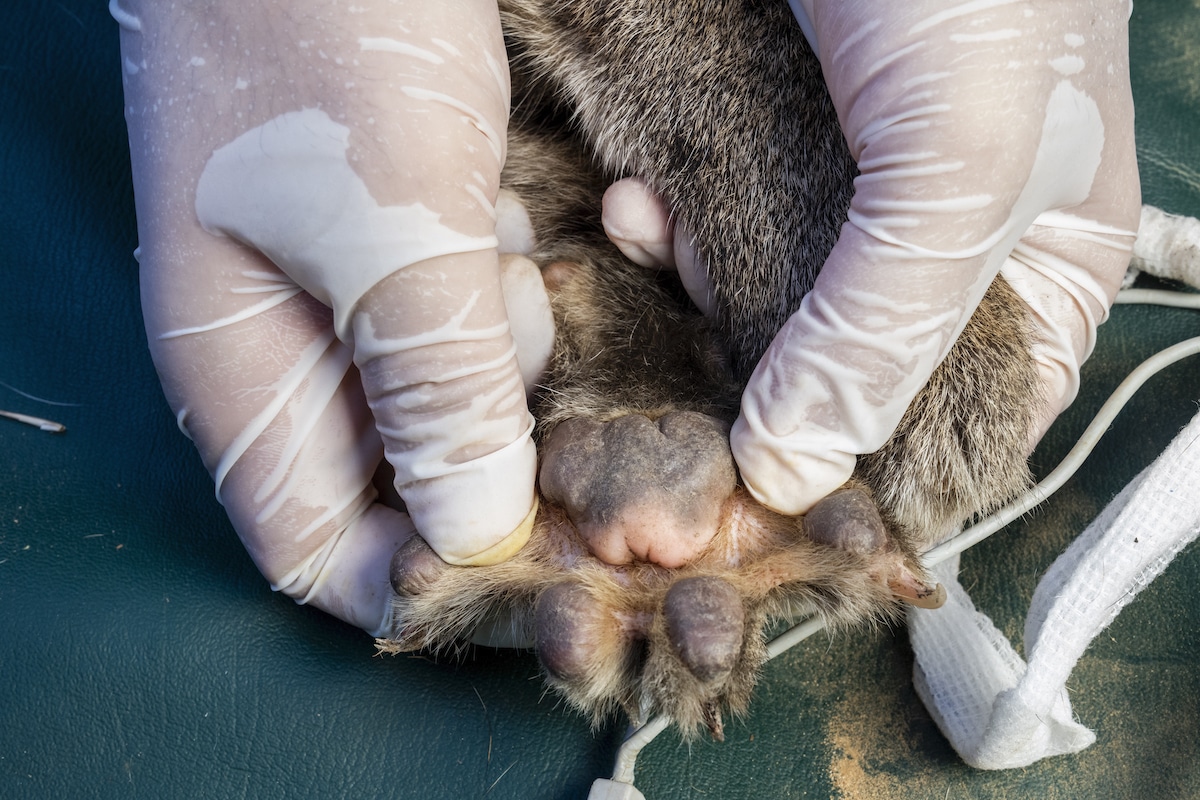
The webbed foot of an anesthetized Fishing Cat (Prionailurus viverrinus) is inspected by biologist Supawat Khaewphakdee during a collaring expedition in Khao Sam Roi Yot National Park, Thailand.
The fishing cat's paws are partially webbed, and claws do not retract. Their name gives away one of their talents — catching fish. Sometimes, they will patiently fish at the bank of ponds, streams, and rivers, but they also go swimming to catch their fish prey, and when they do, it’s thought that their short tails help act as a rudder. However, their name shouldn’t fool you — they also hunt a variety of other prey species, including small animals like mice and birds.
During this expedition, a team from Panthera and partners collared three fishing cats to understand more about the species home range size, use of habitat fragmented by shrimp farms and fish ponds, threats and prey. May, 2022. Contributed by Danielle Garbouchian (Photo: Sebastian Kennerknecht/Panthera)
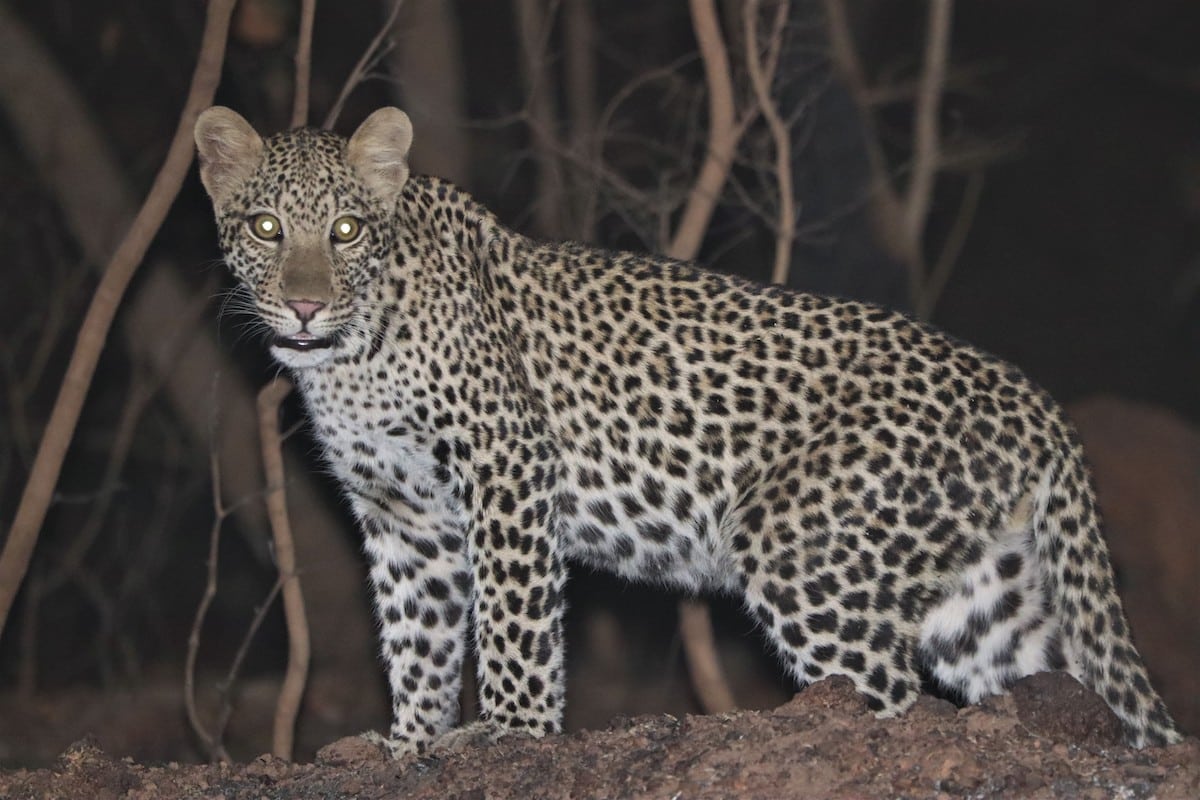
A beautiful young female leopard photographed at night in Niokolo Koba National Park, Senegal. This image was snapped during a lion collaring expedition in 2021 and 2022 that resulted in the collaring of the first ever (and six total) lions in Senegal for conservation monitoring and research.
Leopards have the largest geographic range of any of the big cats. However, they are confronted with a wide suite of threats ,from loss of prey and habitat to direct poaching for their skins. Niokolo Koba National Park may contain west Africa’s largest population of leopards and Panthera’s work in the park is helping to ensure that this young female and her entire population are protected. Contributed by Kristoffer Everatt (Photo: Panthera/Senegal/Everatt)
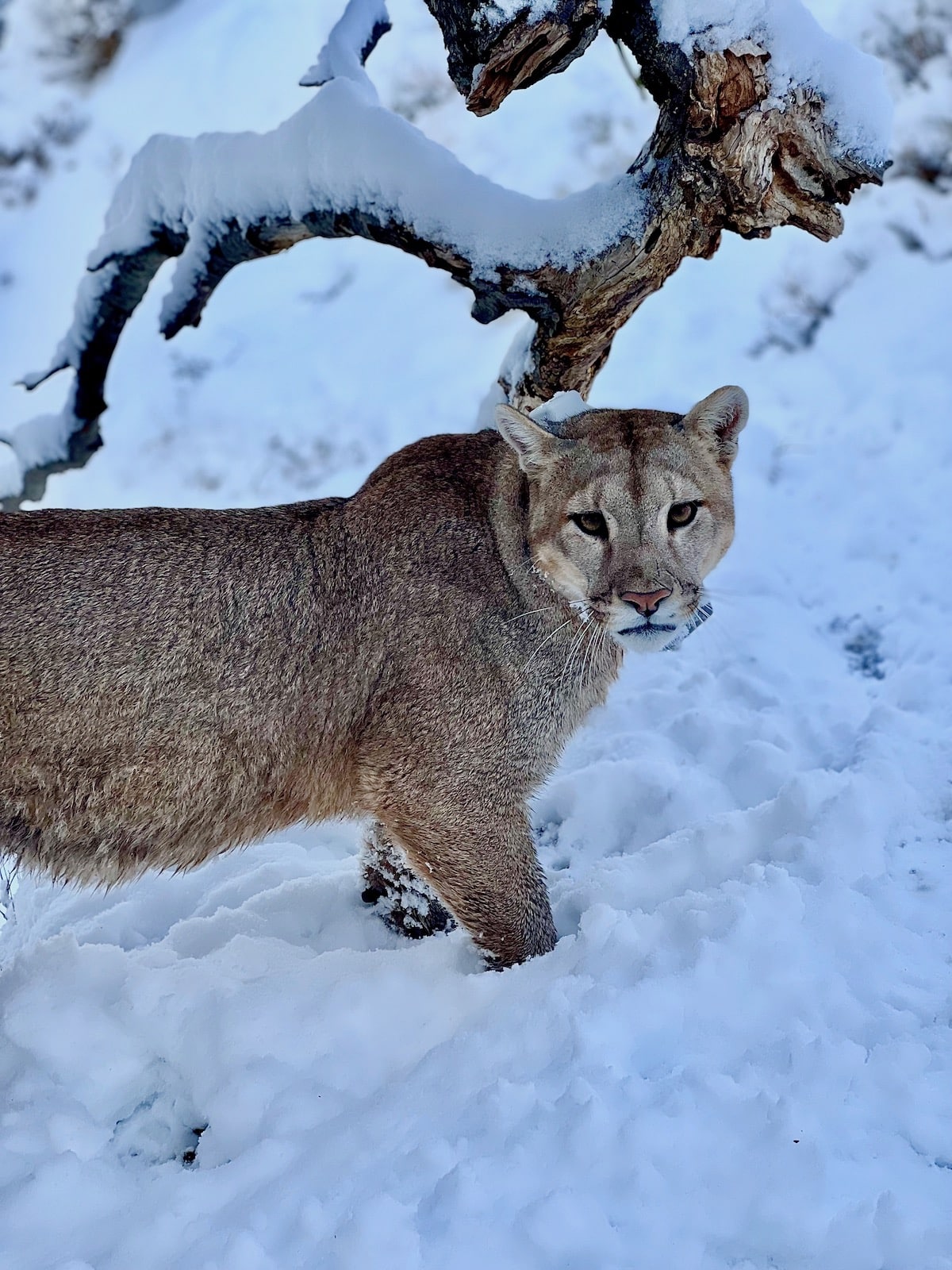
The first puma collared in the Chilean Patagonia by Panthera and partners in 2022. Contributed by Ross Rosenthal (Photo: Caitlin Kupar-Panthera)
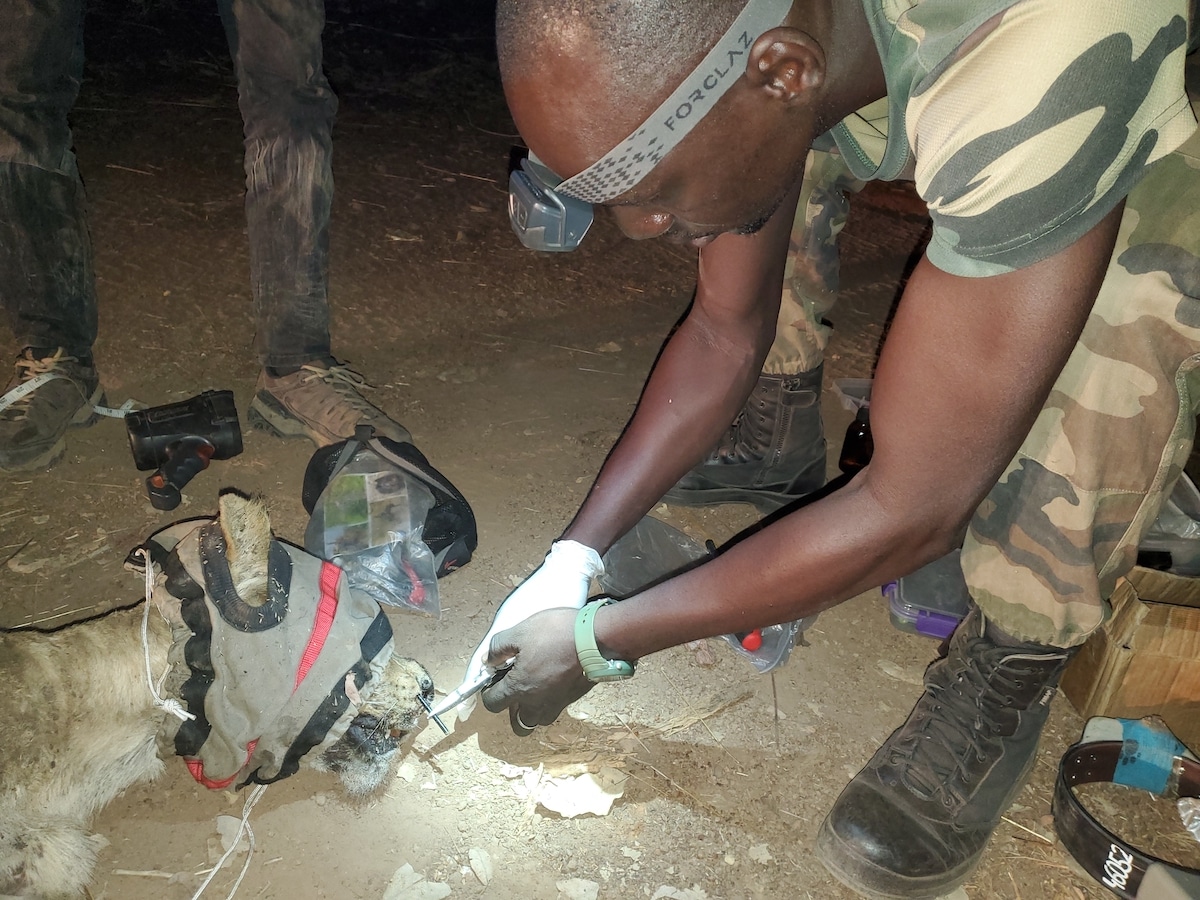
Fall, the wildlife veterinarian for Senegal's Niokolo Koba National Park (NKNP), removes a porcupine quill from an anesthetized lioness's face in Senegal. On the last day of an expedition in which the Park's first lions were collared, a team from Senegal's Department of National Parks and Panthera found this lone, young and skinny lioness. She appeared to have become separated from her pride and was not able to hunt on her own. A closer look showed that she had a face full of porcupine quills, which were preventing her from eating. Her chances of survival were very low. Knowing that over her life, the lioness could make a significant contribution to the recovery of this Critically Endangered population, the team removed the quills from her mouth and face, disinfected her wounds and administered antibiotics. She was left with a few days worth of meat and chance at a new life. While too small to fit with a GPS collar, the team took genetic samples and hope to one day meet her and her offspring. Contributed by Kristoffer Everatt (Photo: Panthera/Senegal/Everatt)
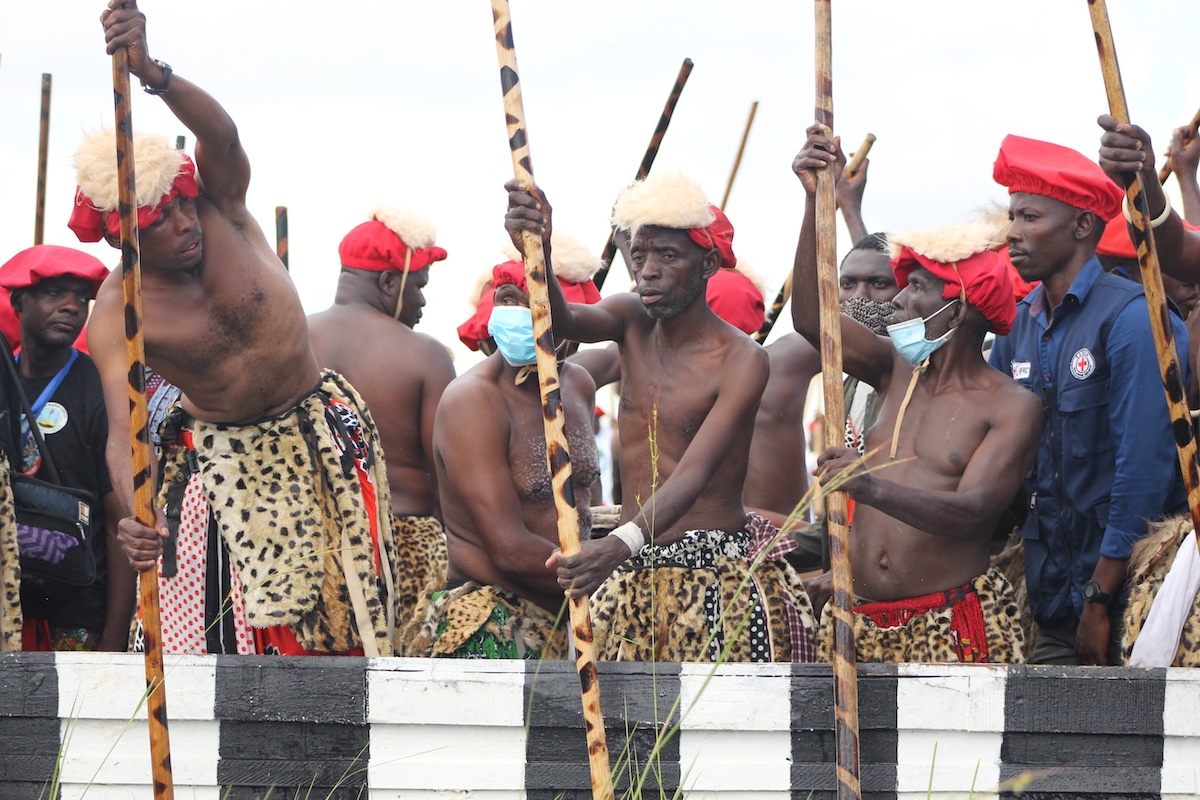
Paddlers on the Nalikwanda Royal Barge and members of the Lozi community in Zambia wearing Panthera's ‘Heritage Furs'.
Panthera and the Barotse Royal Establishment of the Lozi people joined forces to launch Saving Spots — a conservation initiative in western Zambia that seeks to preserve rich cultural traditions while protecting declining wild cat populations using synthetic leopard, serval and lion furs, known as Heritage Furs.
Every year, hundreds of Lozi community members participate in traditional ceremonies, most notably the Kuomboka Festival, a massive gathering on the Barotse Floodplains to escort His Majesty the Lozi King, or Litunga, between palaces by Royal barge. Traditionally, nearly 200 paddlers wear lipatelo, which are elaborate, full-length skirts made of leopard, serval and other animal furs, and lion-mane trimmed berets, known as mishukwe.
Since 2019, with the launch of Saving Spots, the Barotse Royal Establishment have received over 750 Panthera-created synthetic leopard and serval fur lipatelo and 600 synthetic lion-mane mishukwe, which will replace the use of authentic furs by paddlers and, we expect, will help significantly reduce the hunting of hundreds of wild cats across southern Africa where the species are already severely threatened.
Supported by Peace Parks Foundation and Cartier, Panthera worked closely with digital designers to develop the Heritage Furs which were designed and endorsed by His Majesty the Lozi King and His Royal Highness Senior Chief Inyambo Yeta. Since the launch of the project, the Heritage Furs have received overwhelming support among the Lozi community, with the Litunga even banning the use of authentic wild cat skins at all future Lozi gatherings. Contributed by Danielle Garbouchian (Photo: Gareth Whittington-Jones/Panthera)

























